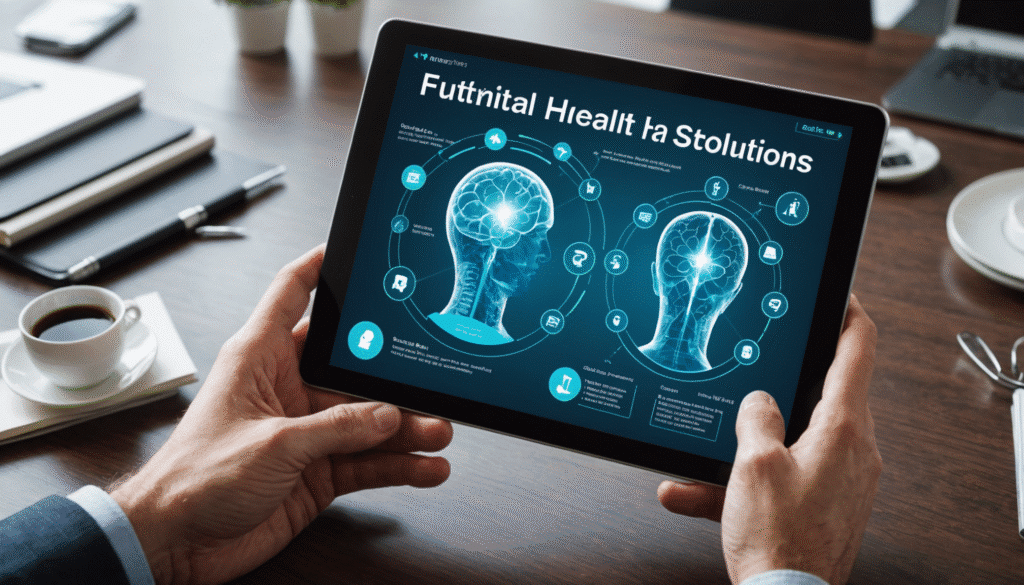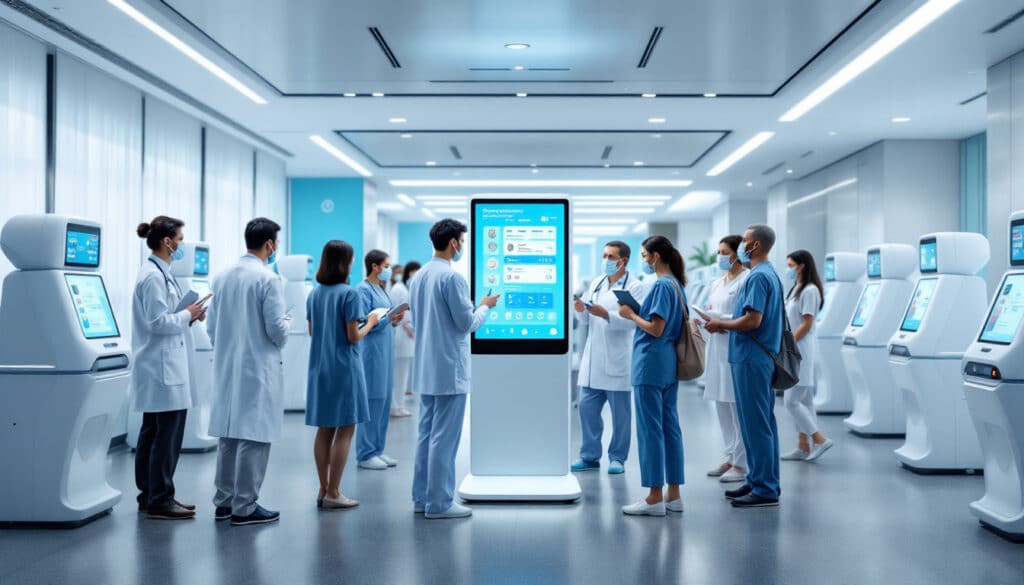The emergence of connected devices has profoundly transformed the heart monitoring, offering innovative possibilities for the management of cardiovascular diseases. These technologies, such as defibrillators and smart wearable devices, enable real-time data collection, making it easier to track heart rhythms and recording ofelectrocardiograms. Thanks to their integration into clinical practice, they not only strengthen the remote monitoring of patients, particularly those suffering fromheart failure, but also offer a personalized approach to monitoring heart health, making the monitoring process more accessible and efficient.
|
IN BRIEF
|
THE connected devices play a leading role in the heart monitoring, enabling a proactive approach to patient health. Thanks to innovative technologies, these tools facilitate the monitoring of heart rate, the recording of electrocardiograms, and offer real-time data analysis. This article explores the different clinical applications of connected devices and their impact on the management of cardiovascular diseases.
Smart wearable devices and heart monitoring
Smart wearable devices have become common for cardiac monitoring. These connected objects allow patients to continuously measure vital parameters such as heartbeat and blood pressure. Using companion apps, users can view their daily data, which contributes to a better understanding of their health. To learn more about useful tools for monitoring health, visit this article: Smart wearable devices.
Remote monitoring and management of heart disease
There remote monitoring Medical care is an essential aspect of the management of heart disease, particularly in the case of heart failure. Thanks to connected medical devices, patient data is collected and analyzed remotely, allowing rapid intervention when necessary. Personalized monitoring helps prevent potential complications and adapt treatment according to the evolution of the patient’s condition. To learn more about this topic, check out this article: Personalized heart health monitoring.
Technologies and security in medical devices
With the rise of connected objects, the cybersecurity has become a major concern. Protecting patient data is paramount, especially when sensitive information is transmitted over networks. Rigorous security protocols must be in place to ensure data confidentiality and integrity. Additionally, it is essential to stay informed about the latest advances in connected medical device security.
Future prospects for connected devices in cardiology
The future prospects for connected devices in cardiology are promising. The development of new technologies will make it possible to improve the quality of care and the effectiveness of treatments. These devices will continue to evolve to incorporate more advanced features, including artificial intelligence for predictive data analysis. To explore advances in the treatment of heart failure, visit this link: Advances in heart failure treatments.
In summary, the use of connected devices in cardiac monitoring offers unprecedented possibilities for improving patient care. They represent a significant advance in the field of health, facilitating monitoring and interaction between health professionals and patients.

Cardiac monitoring constitutes a vital issue in the field of health, particularly for patients at risk. The emergence of connected devices offers new perspectives for cardiovascular monitoring. These technologies, integrated into everyday objects, make it possible to collect and analyze vital data, thus optimizing medical care. This article provides recommendations for the effective use of these tools in cardiac monitoring.
Choice of suitable devices
It is essential to select connected devices that meet the specific needs of each patient. Smart wearable devices, such as watches and bracelets, offer varied functionalities. Some measure the heartbeat, while others record electrocardiograms (ECG). Technical features and ease of use should be evaluated to ensure optimal patient adoption.
Integration with mobile applications
Connecting portable devices to mobile apps is a major asset for cardiac monitoring. These applications allow users to view their data in real time. health data and receive alerts in the event of anomalies. The interaction between the patient and the application promotes awareness of their state of health and encourages them to maintain a healthy lifestyle.
Continuous monitoring and remote monitoring
There remote monitoring is particularly useful for patients suffering from heart failure. Connected medical devices facilitate remote data transmission and analysis. In this context, tools such as a connected bathroom scale or a connected blood pressure monitor provide valuable insights into the evolution of heart health. Doctors can thus adjust treatments in real time and prevent complications.
Patient education and awareness
A key element of cardiac monitoring is theeducation patients on the use of connected devices. It is imperative that patients understand how these tools work and the importance of tracking their health metrics regularly. Regular information sessions can help reduce anxiety about using these technologies and encourage active participation in their own monitoring.
Data protection and cybersecurity
With the rise of connected health objects, the question of cybersecurity becomes crucial. Cardiac monitoring devices collect sensitive medical information that must be protected. It is recommended to choose devices that comply with current security standards and to use strong passwords to access applications. Educating users about cybersecurity risks is also essential to protect their personal data.
Collaboration between health professionals
The collaboration between healthcare professionals and patients is essential to guarantee effective monitoring. Doctors must be involved in the choice of devices and monitoring of data, in order to offer informed recommendations based on the observations made by these tools. This collaborative approach promotes personalized monitoring and better management of cardiac pathologies.

The use of connected devices in cardiac monitoring represents a significant advance in the field of health. These innovative technologies enable continuous monitoring vital patient data, thus contributing to better management of cardiovascular diseases. THE smart wearable devices, such as smartwatches and heart rate monitors, accurately measure essential parameters like heartbeat and theelectrocardiogram, facilitating early detection of anomalies.
By integrating these tools into the care pathway, healthcare professionals can carry out a remote monitoring effective for patients, particularly those suffering from heart failure. By collecting real-time data, it is possible to anticipate and respond quickly to medical needs. For example, the connected blood pressure monitors and the connected bathroom scales provide clear information about patients’ health status, helping doctors adjust their treatments accordingly.
In addition, these devices promote patient empowerment by allowing them to monitor their health status on a daily basis, while having direct access to alerts and notifications regarding fluctuations in their vital parameters. This not only improves the motivation patients to take charge of their health, but it also strengthens the doctor-patient relationship through constant communication.
Finally, it is essential to emphasize the importance of cybersecurity in the use of these connected devices. Sensitive data must be protected to ensure patient confidentiality while benefiting from technological advances. The combination of the technology and a patient-centered approach reinvents the heart monitoring, leading to more favorable health outcomes.












